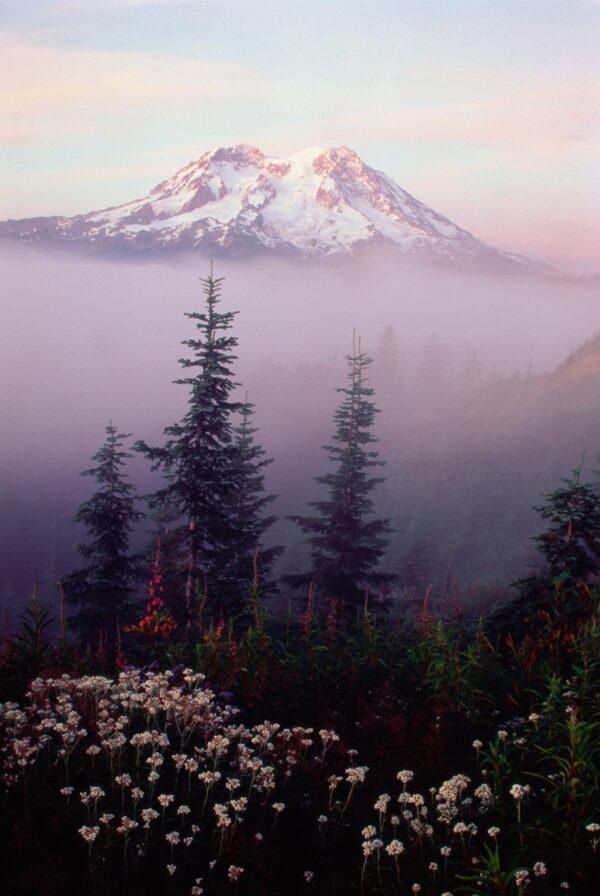“The most luxuriant and the most extravagantly beautiful of all the alpine gardens I ever beheld in all my mountain-top wanderings.” —John MuirTowering over the surrounding landscape like an earthbound deity, Mount Rainier in Washington state simultaneously possesses the power for bountiful creation and extreme destruction. With over two dozen glaciers on its nearly 3-mile-high peak, the water gathered by the mountain is the source of five major rivers that continuously fuel life on the slopes and land below. From sub-alpine meadows to ancient forests, the mountain is home to hundreds of species of flora and fauna. The beauty and peace found climbing up the mountain’s solitude earned an area of the park the name “Paradise” in the early 20th century. However, as the largest active volcano in the Cascade Mountain range, Mount Rainier has the potential to take away much of what it has given. Scientists and park enthusiasts keep a watchful eye on the perennial gifts and threats that this magnificent mountain provides to growing population centers of the Seattle region.
An Earthly ‘Paradise’
Hiking above the clouds on this natural wonder, around 2 million annual visitors marvel at the myriad colors and abundant life that combine to make this destination uniquely attractive. Streams peacefully flow through the mountain’s verdantly green meadows as plump marmots busily chew on purple, broadleaf lupine flowers that sway subtly in the breeze. Winding trails climb through the meadow with wooden steps looking like a stairway to heaven. In the distance, above the vibrant green are bright blue sky, white clouds, and Mount Rainier’s weathered summit, 14,410 feet above sea level.
Darrell Gulin/The Image Bank/Getty images





